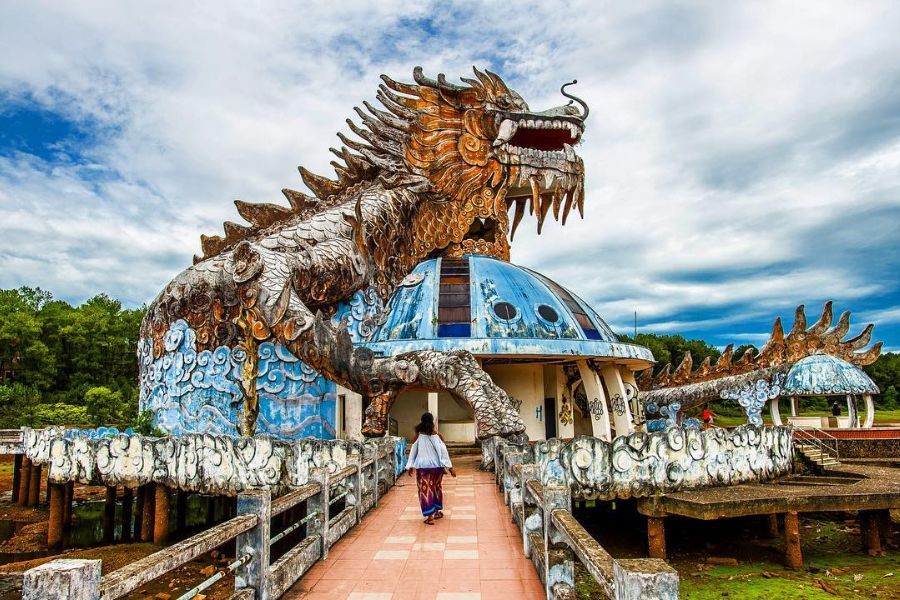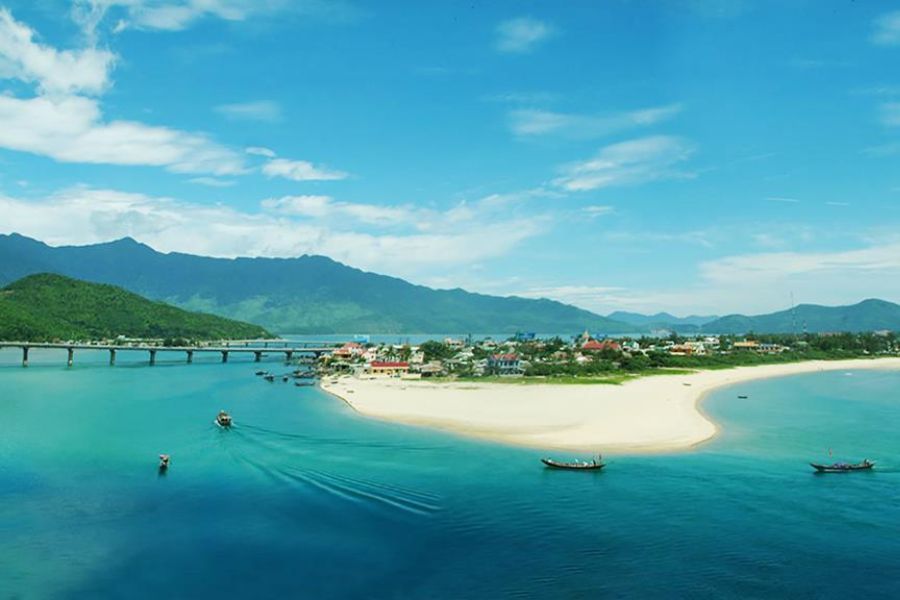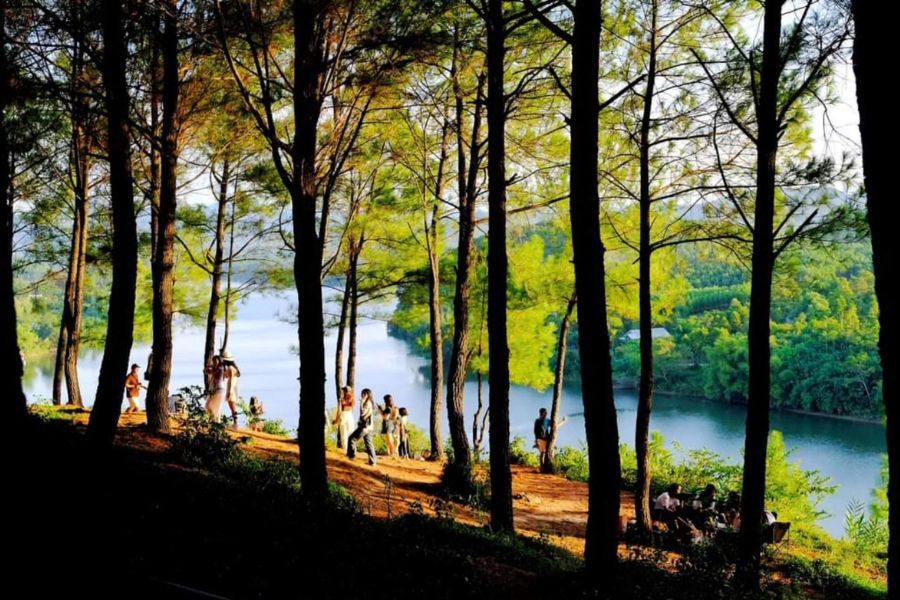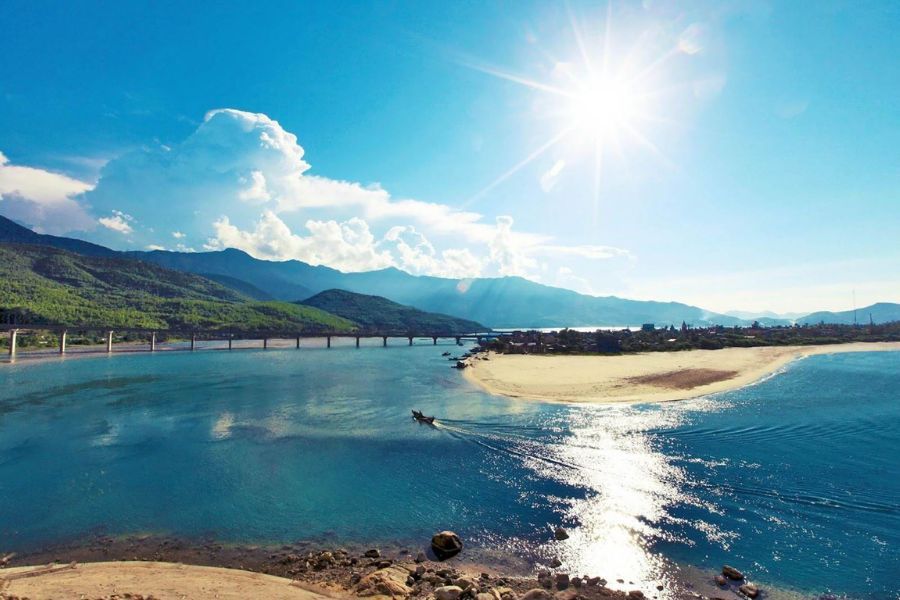An Dinh Palace: A Royal Heritage Of Time
An Dinh Palace is a romantic blend of European and Vietnamese ways. It shows the regal charm of the Nguyen Dynasty. A quiet spot full of history and charm, it’s a go-to place for many who visit.
Table of Contents
ToggleIntroduction To The An Dinh Palace
An Dinh Palace represents one of Vietnam’s most fascinating examples of architectural fusion. This big palace was once the house of Emperor Khai Dinh, and later, the last emperor, Bao Dai, stayed there during his peak in Vietnam.
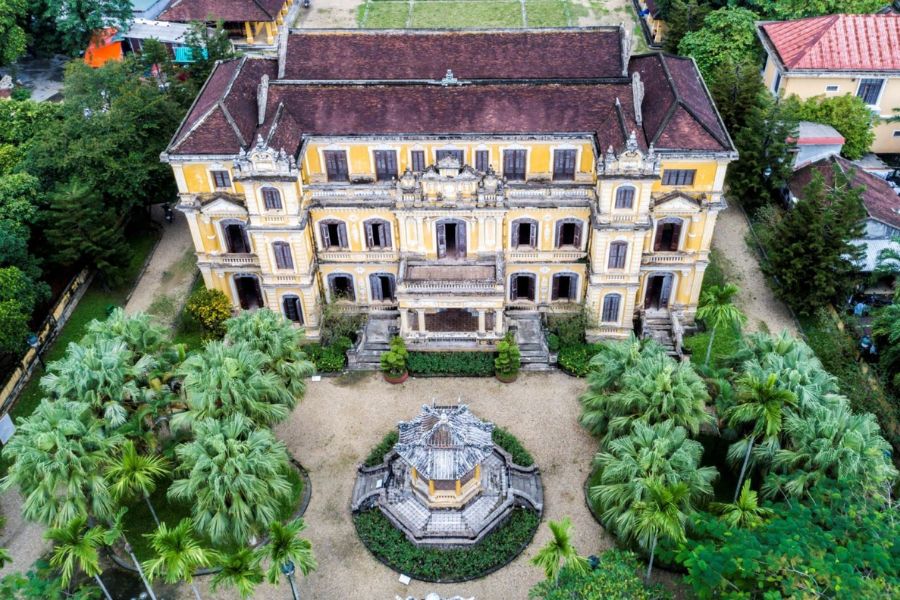
Entering An Dinh Palace feels like entering a living story, in which every room tells how Vietnam experienced Eastern and Western styles intertwined. An Dinh Palace allows you to see how the members of the imperial family live, unlike other bigger places in Hue, like the Imperial City. The preservation of artifacts, the atmosphere, and the configuration of the structure are all representative of the early 1900s, which was an important yet complex time in Vietnam’s royal history.
History Of An Dinh Palace
The story of An Dinh Palace is connected to the last rulers of the Nguyen dynasty, King Khai Dinh and his son, Bao Dai. Originally constructed in 1902 as a residence for the crown prince, it became the lavish palace we recognize today after Khai Dinh ascended to the throne. By 1922, the structure, as a gift to his son, had transformed into the primary house for the royal family, providing personal space away from the formalities of the Imperial City.
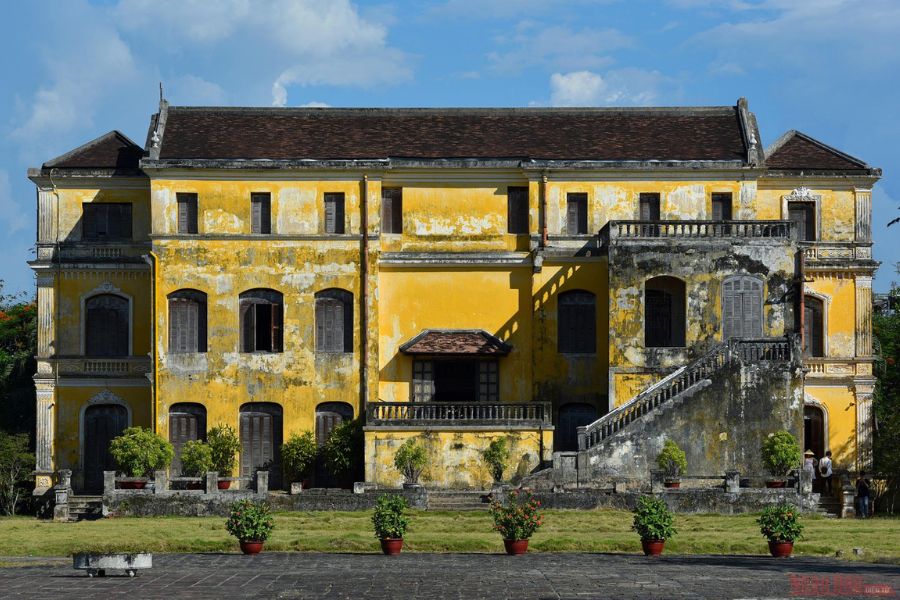
After Bao Dai abdicated his throne in 1945, the palace remained the last residence in Vietnam for him and his family. In 1955, Queen Mother Tu Cung gifted the property to the government. Although neglected for some time, An Dinh Palace has been professionally restored and is now a UNESCO World Heritage site. It keeps the authentic stories of the last royalty.
The Architecture Features Of An Dinh Palace
The best part of the An Dinh Palace is its architecture, a blend of Asian and Western styles. There were once ten great buildings on the palace land, but now only three are left because of time: the Main Gate, Trung Lap Pavilion, and Khai Tuong Pavilion.
The Main Gate
As you step in, you first see the two-floor Main Gate, a true piece of art. It’s made in the Vietnamese “tam quan” (three-door) style, and it puts on a grand show. It has nice porcelain and bits of broken glass, with old Vietnamese marks like dragons, phoenixes, and the four seasons. The top of the gate joins East and West, with a crown-like thing and a big pearl on top, standing for kings and luck.
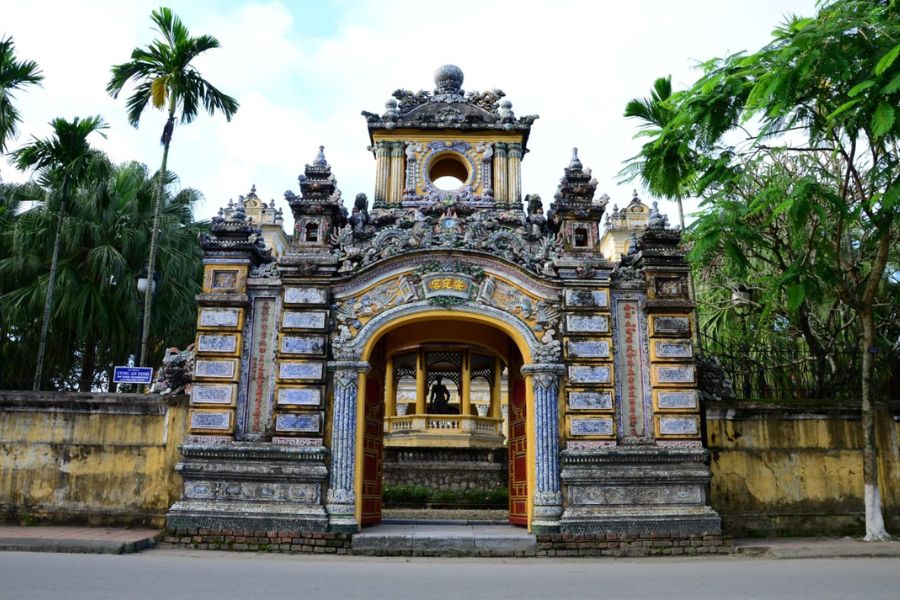
The Trung Lap Pavilion
Just after you walk through the main gate, you come to the Trung Lap Pavilion. This big, eight-sided place has a bronze figure of King Khai Dinh in the middle. This place was once for big parties and meeting guests. It has an open feel and fine details, giving a royal vibe, and leads to the main spot, the grand Khai Tuong Pavilion.
The Khai Tuong Pavilion
The Khai Tuong Pavilion is the top building at the center of An Dinh Palace, a three-level structure that illustrates how the palace combines different types of buildings. The building appears like a large European house, but the large, arched windows suggest French influence, the tall posts suggest Roman influence, and the front features, which are generous and nice. The color of the building is rich yellow, and it stands out against the green tree lines.
The walls and top of the pavilion illustrate fine artwork and wall paint that merge styles of wok from the west with stories of Vietnam. The first floor will grip your emotions with six large wall arts of important old stories and major events of Vietnam. The second and third floors emulate the kings’ daily life for the royal family of Nguyen dynasty. The descriptive name of the “Khai Tuong”, meaning “the beginning of good luck,” as speculation of future developments for the royal family is one hope for better days.
6 Cultural Experiences You Shouldn’t Miss
An Dinh Palace gives guests many ways to learn about the royal culture of Vietnam and see how old ways changed with time. Each visit lets people see the deep cultural roots that made Vietnam what it was in the early 1900s.
Explore the Royal Living Quarters
The private family areas of An Dinh Palace show close looks at how Vietnamese kings lived when old royal ways met new world styles. These rooms keep their original furniture and show parts that tell us about daily life – things you don’t see in the bigger, public palace parts.
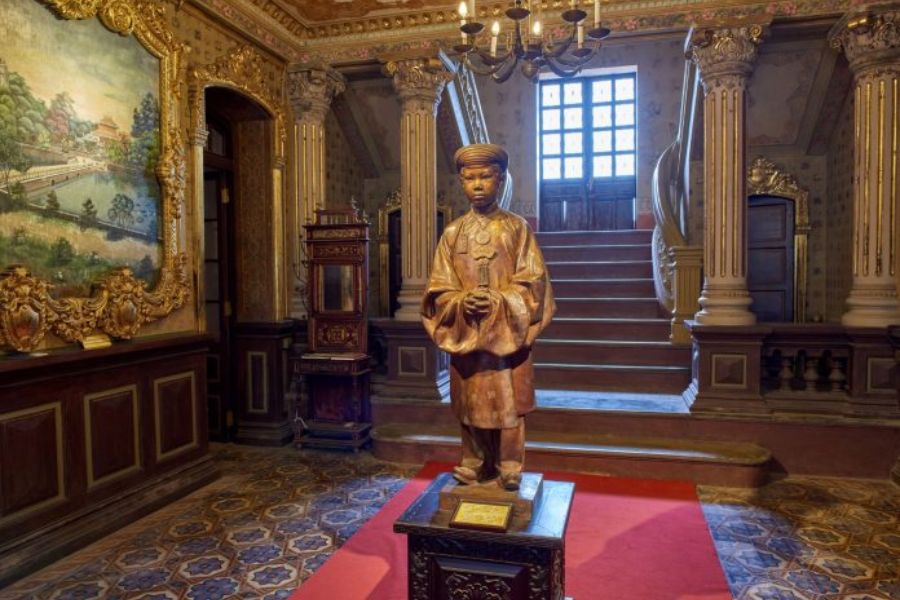
Going through the king’s study, you see what he liked and the cultures that helped form how he saw the world. Books in French, Vietnamese, and Chinese show the mix of languages the Vietnamese kings knew at this time. Own items and art show how the royal family mixed the old Vietnamese style with new European ways.
Participate In Traditional Tea Ceremonies
An Dinh Palace sometimes has old Vietnamese tea events that show how this key custom kept giving shape and sense to the lives of royal families even when other ways changed to mix with Western styles.
These tea events are held in rooms of the palace that are made to look as they did long ago, with real items used in ceremonies that the royal court owned. People taking part learn what the symbols mean in making and giving tea, and also feel the quiet moments that made these events key for helping the royal family deal with stress and make their bonds stronger.
Attend Traditional Music Performances
The palace often puts on traditional music shows that make the old rooms come to life with real cultural bits. These shows use the kinds of music tools and tunes that were used to amuse the royal court when the palace was busy.
In the palace’s big front room, the music from the court shows how the old arts from Vietnam kept their place even when things from Europe started to mix into other parts of life at court. The sound in these big, old rooms makes the music better and helps those who come by get a deeper feel for the culture.
Admire The Wall Art
In the big house, some noteworthy finds are the frescoes that look like they’re from Europe. They’re on walls and tops of rooms. These bright, full-of-color art pieces are in good shape, and they mix East and West looks well. Some show tales of myths, while others show normal day things or mean something more. Seeing this art in a royal house in Vietnam is not common. It shows that, back then, the Nguyen rulers liked to try new things and were open to new ideas. If you get close to these paintings, you can see the careful paint work and feel a sense of beauty that makes you think.
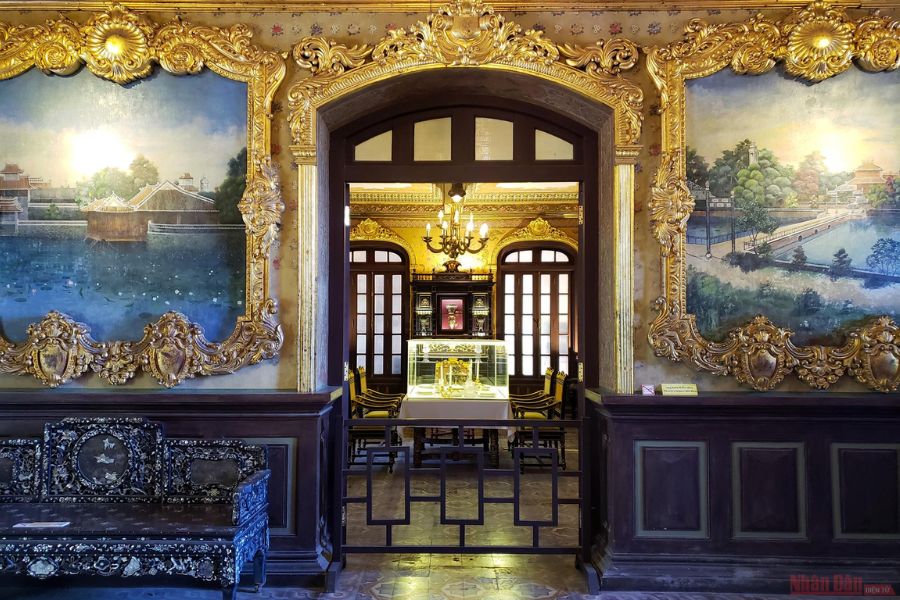
Learn About Queen Mother Tu Cung
The warmest part of the big house is the living area of Queen Mother Tu Cung, who was the mother of Emperor Bao Dai. Her rooms are just as they were, with things she owned, simple but full of meaning, from family photos to written notes and even simple tools. You can still feel her there, sharing a look into her strong, quiet power, even when things were changing around her. Knowing her story brings the history of the Nguyen rulers to a personal level, more than just kings and big houses, showing us how mothers behind the kings helped shape history too.
Enjoy The Quiet Moments In The Yard
After you see inside, go out to the middle yard. There, mossy stone paths, cool trees, and a quiet wind let you have a calm time. The mix of old European style and old Vietnamese garden feel makes a calm peace. It asks you to sit, think, or snap photos slowly. It’s a quiet spot away from the busy parts of Hue, a place to take it slow and sense the old times. If you love history or just want some quiet, the garden at An Dinh Palace is a whole vibe on its own.
Entrance Fee
The price to get into An Dinh Palace is quite cheap, so all kinds of people can visit.
- Adults: 50,000 VND each.
- Children: Free.
Keep in mind: These prices can change. It’s advisable to check with the official ticket office or a local tour guide to get the latest details.
Opening Hours
An Dinh Palace is open from 7 am to 5 pm each day. These set open times let guests plan their Hue trips well. They have enough time to deeply see the palace and its gardens.
The best time to go is in the early morning or late in the day to stay away from the hot noon sun. The light is softer then, too, which is great for taking photos. The cool, dry months from March to May are the best for walking around.
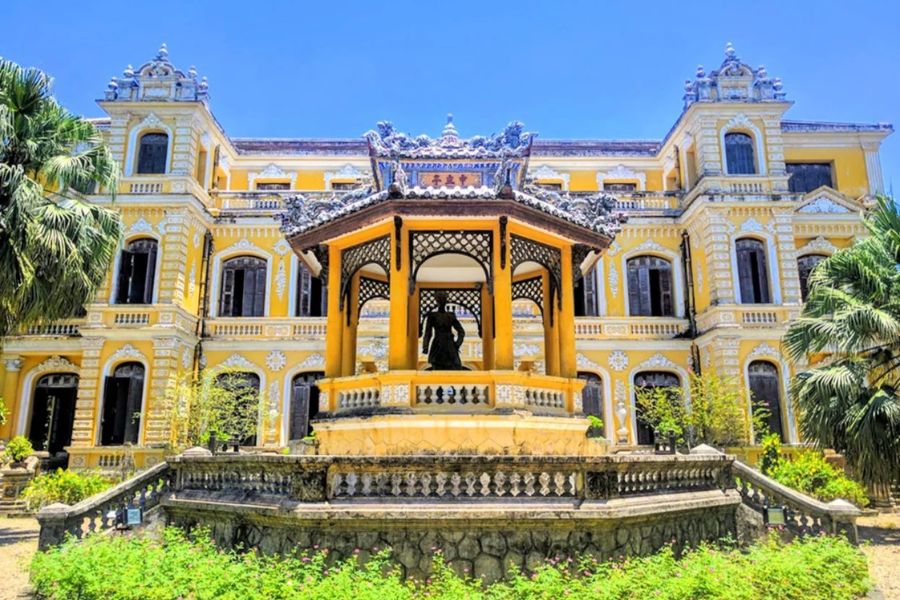
How To Get To An Dinh Palace
An Dinh Palace sits by the An Cuu River in Hue, in a spot that’s easy to reach. You can get there in many ways. Its place in the heart of Hue’s old area lets you see more old spots on the same trip.
| Transport Method | Duration | Cost | Recommended For |
| Walking | 15 – 25 minutes | Free | Budget travelers, exercise enthusiasts |
| Bicycle rental | 5 – 10 minutes | 40,000 – 60,000 VND/day | Eco-friendly exploration |
| Motorbike taxi | 5 – 8 minutes | 20,000 – 35,000 VND | Quick, convenient transport |
| Regular taxi/Grab | 8 – 12 minutes | 35,000 – 50,000 VND | Comfort, air conditioning |
From Hue Railway Station
| Transport Method | Duration | Cost |
| Taxi | 12 – 18 minutes | 70,000 – 90,000 VND |
| Local bus | 25 – 35 minutes | 8,000 – 12,000 VND |
| Motorbike taxi | 15 – 20 minutes | 50,000 – 70,000 VND |
From Phu Bai Airport
| Transport Method | Duration | Cost |
| Airport shuttle | 50 – 65 minutes | 80,000 – 120,000 VND |
| Private taxi | 30 – 40 minutes | 350,000 – 450,000 VND |
| Motorbike taxi | 35 – 45 minutes | 180,000 – 250,000 VND |
Things to Know Before Traveling to An Dinh Palace
Getting ready well makes your palace trip better, letting you fully enjoy the beauty and meaning of this old place. Knowing the right things to do in Hue and the culture helps you use your time well at the royal home.
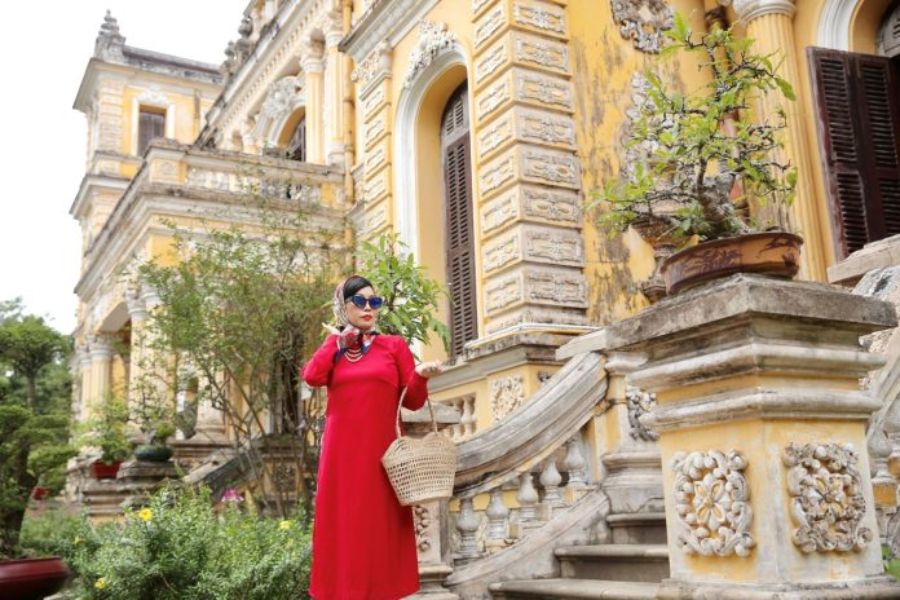
- The An Dinh Palace is not very strict about what to wear, like some holy places, but you should still dress well when you walk through royal rooms.
- Good shoes for walking are key, as you will walk on many kinds of floors, from shiny wood to stone paths. Wearing simple clothes shows you know why royal places are important.
- You can usually take your photos in most parts of the palace, but some areas with special items might have rules. If you want to use big photo tools, you need to get a permit and might have to pay more. Flash photos may be off-limits in some spots to keep old items and decorations safe.
- An Dinh Palace is a key cultural spot for the people of Vietnam, so guests must show the right respect and interest when they visit. Keep voices low and avoid actions that may ruin the quiet feeling that many look for in such old places.
Final Thoughts: Is An Dinh Palace Worth Visiting?
An Dinh Palace offers a great visit for those looking to learn about Vietnam’s rich culture and the special time when East and West met in Vietnamese royal life. It blends unique building styles, personal stories, and deep cultural meanings. Let SeniWorld lead you to the best An Dinh Palace trip and find out why this great building still draws people from all over the world!








